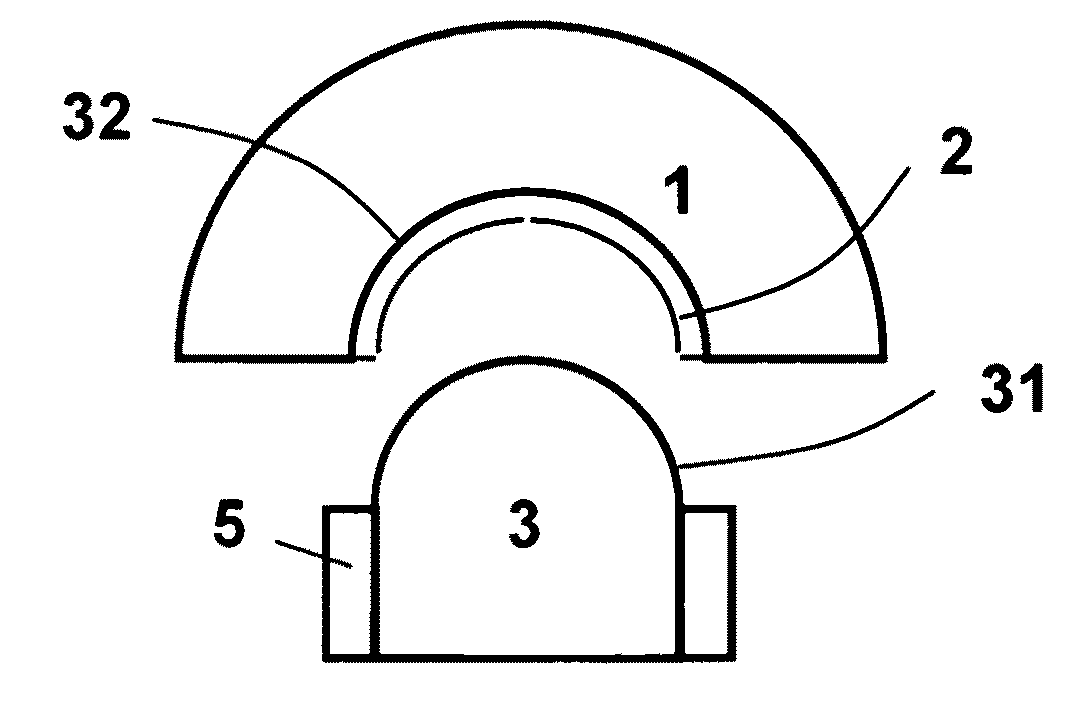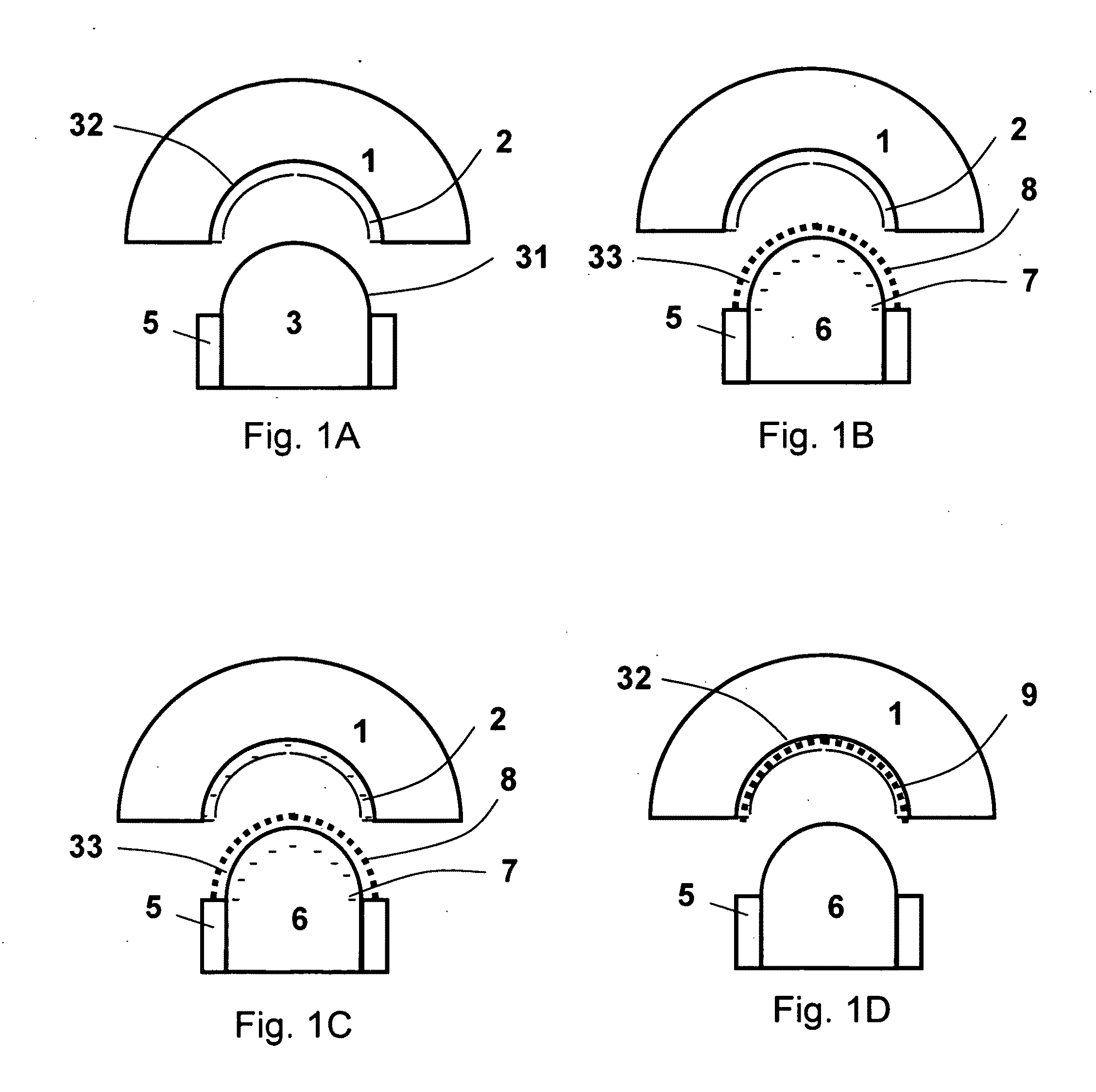Methods and apparatus for forming uniform particle layers of phosphor material on a surface
- Summary
- Abstract
- Description
- Claims
- Application Information
AI Technical Summary
Benefits of technology
Problems solved by technology
Method used
Image
Examples
Embodiment Construction
[0051]In the specific examples described herein, phosphors are used for converting or altering light wavelength, e.g., for LED-based light sources. Common phosphors for these purposes include yttrium aluminum garnet (YAG) materials, terbium aluminum garnet (TAG) materials, ZnSeS+ materials, and silicon aluminum oxynitride (SiAlON) materials (such as. α-SiAlON), etc. According to embodiments of the present invention, however, any material that converts or alters wavelength of incident light can be used as a phosphor material. As used herein, the term “phosphor” represents all materials that is capable of converting or altering a wavelength of light to another wavelength, including mixture or combination of different wavelength-converting or wavelength altering materials.
[0052]In some embodiments of the present invention, the coating process does not require keeping powder particles and binder in a liquid suspension form. Phosphor powder particles and binder materials can be coated se...
PUM
| Property | Measurement | Unit |
|---|---|---|
| Electric charge | aaaaa | aaaaa |
| Electrical conductor | aaaaa | aaaaa |
| Distance | aaaaa | aaaaa |
Abstract
Description
Claims
Application Information
 Login to View More
Login to View More - R&D
- Intellectual Property
- Life Sciences
- Materials
- Tech Scout
- Unparalleled Data Quality
- Higher Quality Content
- 60% Fewer Hallucinations
Browse by: Latest US Patents, China's latest patents, Technical Efficacy Thesaurus, Application Domain, Technology Topic, Popular Technical Reports.
© 2025 PatSnap. All rights reserved.Legal|Privacy policy|Modern Slavery Act Transparency Statement|Sitemap|About US| Contact US: help@patsnap.com



